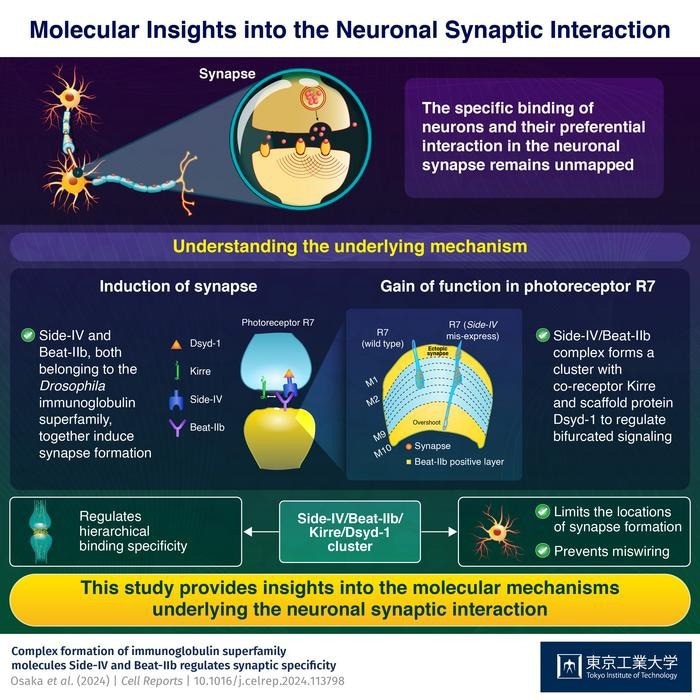Neurons, also called nerve cells, are essential components of the central nervous system. They play a crucial role in signal transduction pathways.

This study provides insights into the molecular mechanisms underlying the neuronal synaptic interaction. Image Credit: Tokyo Institute of Technology
The transmission of information or signals from one neuron to another relies on the establishment of neuronal synapses, which can be either chemical (involving neurotransmitters) or electrical (through protein channels and ions). However, the precise mechanisms governing binding specificity and the formation of preferential interactions between neuronal pairs remain poorly understood.
Under the direction of Associate Professor Takashi Suzuki of the Tokyo Institute of Technology's (Tokyo Tech) School of Life Science and Technology, a team of Japanese researchers recently endeavored to unravel the complex molecular mechanisms underlying neuronal communication circuits.
Take, for example, a person driving an automobile. The precise and rapid communication between the driver’s perception and the locomotor system can be the difference between life and death.
Dr. Takashi Suzuki, Associate Professor, School of Life Science and Technology, Tokyo Institute of Technology
Dr. Suzuki said, “The appropriate functioning of the nervous system ultimately comes down to a precise synaptic interaction between different types of neurons. Hence, our group focused on studying the molecular mechanisms of synaptic specificity using Drosophila, which allowed a genotypic as well as phenotypic assessment.”
To determine the molecular mechanisms underlying synaptic communication, the researchers combined investigations of interactomes (protein–protein interactions) with genetic data. The findings demonstrated that the induction of synapse formation was caused by a particular interaction between protein molecules belonging to the Side-IV/Beat-IIb immunoglobulin superfamily.
The synaptic selectivity between neurons was mostly mediated by this Side-IV/Beat-IIb combination. Together with Dsyd-1, a synaptic scaffold protein, and Kirre, Side-IV's co-receptor, Side-IV/Beat-IIb created a cluster that regulated a preferred signaling pathway among neuron pairs. The research was published in the journal Cell Reports.
Knockdown studies targeting synaptic scaffold protein Dsyd-1 and Liprin-α have shown a significant reduction in synapse formation. Moreover, Side-IV protein interaction with Dsyd-1 led to the formation of an active zone, promoting a heightened preference for synapse formation between specific neurons. This mechanism serves to prevent miswiring within neural circuits.
We believe that our study can contribute to our current understanding of neuronal synapse and hierarchical ranking interactions among neuronal pairs. Future research involving higher order mutant species can build on our study to address the neurodegenerative disease landscape and aid in developing therapeutic strategies in the long term.
Dr. Takashi Suzuki, Associate Professor, School of Life Science and Technology, Tokyo Institute of Technology
The current research provides insightful insight into the chemical details of neural communication.
Source:
Journal reference:
Osaka, J., et al. (2024) Complex formation of immunoglobulin superfamily molecules Side-IV and Beat-IIb regulates synaptic specificity. Cell Reports. doi.org/10.1016/j.celrep.2024.113798